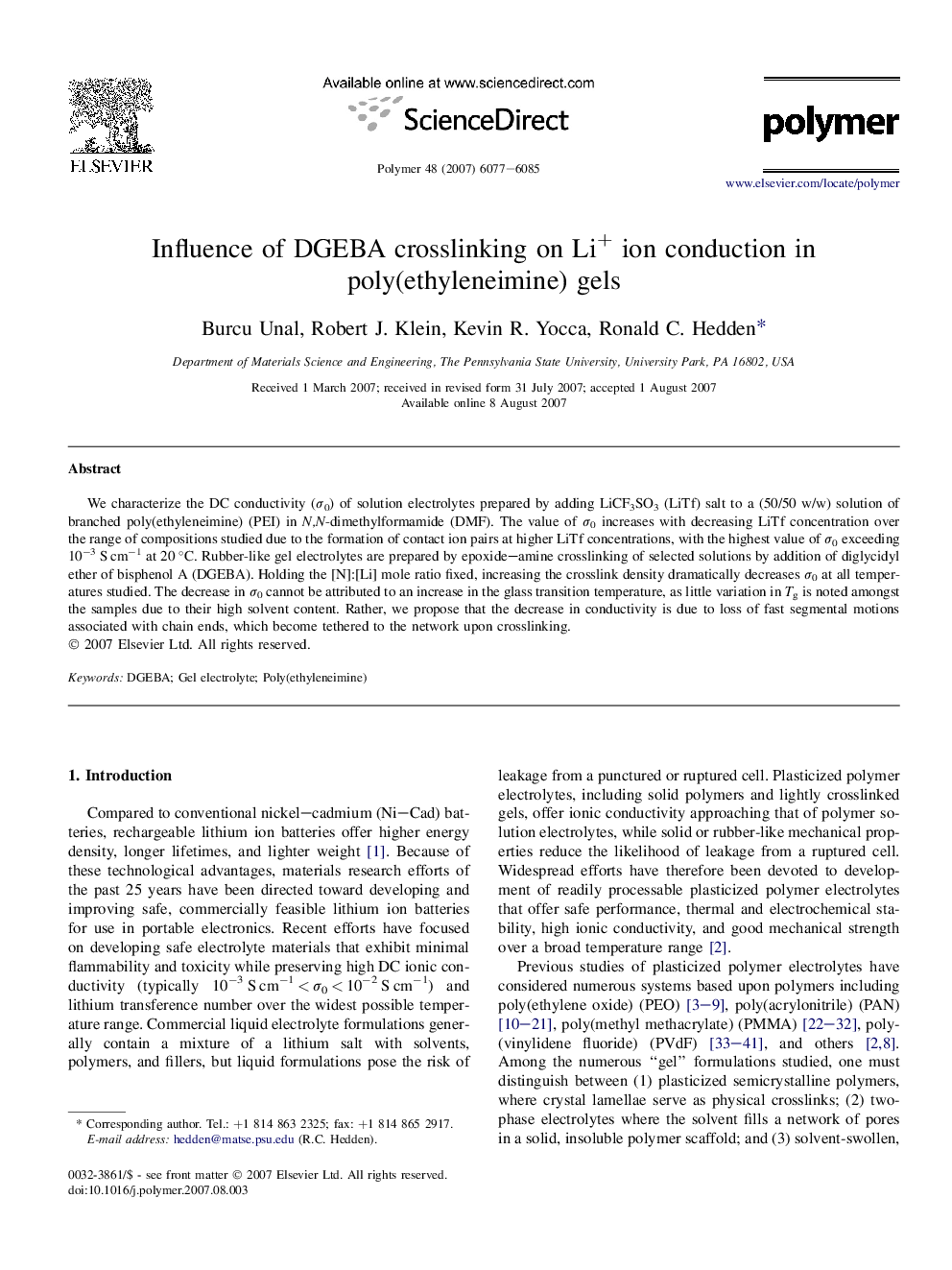| Article ID | Journal | Published Year | Pages | File Type |
|---|---|---|---|---|
| 5189465 | Polymer | 2007 | 9 Pages |
Abstract
We characterize the DC conductivity (Ï0) of solution electrolytes prepared by adding LiCF3SO3 (LiTf) salt to a (50/50 w/w) solution of branched poly(ethyleneimine) (PEI) in N,N-dimethylformamide (DMF). The value of Ï0 increases with decreasing LiTf concentration over the range of compositions studied due to the formation of contact ion pairs at higher LiTf concentrations, with the highest value of Ï0 exceeding 10â3 S cmâ1 at 20 °C. Rubber-like gel electrolytes are prepared by epoxide-amine crosslinking of selected solutions by addition of diglycidyl ether of bisphenol A (DGEBA). Holding the [N]:[Li] mole ratio fixed, increasing the crosslink density dramatically decreases Ï0 at all temperatures studied. The decrease in Ï0 cannot be attributed to an increase in the glass transition temperature, as little variation in Tg is noted amongst the samples due to their high solvent content. Rather, we propose that the decrease in conductivity is due to loss of fast segmental motions associated with chain ends, which become tethered to the network upon crosslinking.
Related Topics
Physical Sciences and Engineering
Chemistry
Organic Chemistry
Authors
Burcu Unal, Robert J. Klein, Kevin R. Yocca, Ronald C. Hedden,
